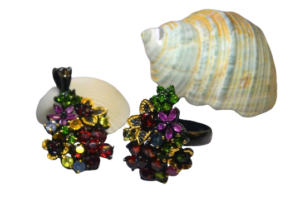 In the vast landscape of investment opportunities, rhodium has emerged as a tantalizing prospect for those seeking to diversify their portfolios and capitalize on the potential of precious metals. With its scarcity, unique properties, and expanding industrial applications, rhodium offers investors a compelling opportunity to tap into a niche market with significant growth potential. But how do you invest in rhodium? Let’s explore the primary pathways and weigh their pros and cons.
In the vast landscape of investment opportunities, rhodium has emerged as a tantalizing prospect for those seeking to diversify their portfolios and capitalize on the potential of precious metals. With its scarcity, unique properties, and expanding industrial applications, rhodium offers investors a compelling opportunity to tap into a niche market with significant growth potential. But how do you invest in rhodium? Let’s explore the primary pathways and weigh their pros and cons.
Deciphering Rhodium’s Appeal
Before diving into investment strategies, let’s understand what makes rhodium so appealing. Rhodium is a rare precious metal belonging to the platinum group, known for its lustrous, silvery-white appearance. Its exceptional corrosion resistance, high melting point, and catalytic properties have led to its widespread use in various industries.
The primary application of rhodium is in catalytic converters, where it helps reduce harmful emissions from vehicles, playing a crucial role in environmental protection. Additionally, rhodium finds use in jewelry, electronics, and industrial processes, highlighting its versatility and value across sectors.
1. Rhodium Bars and Coins
Investing in physical rhodium bullion, such as bars and coins, is one of the most direct ways to gain exposure to this precious metal. Rhodium bullion is available in various weights and purities, providing investors with flexibility in their investment choices. Here are the pros and cons of investing in rhodium bars and coins:
Pros:
- Tangible Asset: Physical rhodium bullion provides investors with tangible ownership of the metal, offering a sense of security and stability.
- Store of Value: Rhodium bars and coins serve as a store of value, preserving wealth and hedging against economic uncertainty.
- Portfolio Diversification: Adding rhodium to a diversified investment portfolio can help mitigate risk and enhance long-term returns.
Cons:
- Storage Concerns: Storing physical rhodium bullion securely can be challenging and may incur additional costs.
- Lack of Liquidity: Selling physical rhodium bullion may be less liquid compared to other investment options, potentially resulting in delays or lower selling prices.
2. Rhodium Exchange-Traded Funds (ETFs)
Rhodium exchange-traded funds (ETFs) offer investors exposure to rhodium prices without the logistical challenges of storing physical bullion. These specialized funds track the performance of rhodium prices and trade on major stock exchanges. Here are the pros and cons of investing in rhodium ETFs:
Pros:
- Convenience: Rhodium ETFs provide investors with a convenient and accessible way to gain exposure to rhodium prices without the need for physical storage.
- Liquidity: Rhodium ETFs trade on major stock exchanges, offering liquidity and ease of buying and selling.
- Diversification: Investing in rhodium ETFs allows investors to diversify their portfolios and gain exposure to rhodium alongside other asset classes.
Cons:
- Management Fees: Rhodium ETFs may charge management fees and other expenses, which can reduce overall returns over time.
- Market Volatility: Like any investment, rhodium ETFs are subject to market volatility, and prices can fluctuate based on supply and demand dynamics.
Wrapping up!
Investing in rhodium offers an exciting opportunity for investors seeking exposure to a rare and valuable metal with significant growth potential. Whether through physical bullion or ETFs, investors have multiple pathways to tap into the rhodium market and diversify their portfolios.
Each investment option has its own set of pros and cons, and investors should carefully weigh their risk tolerance, investment objectives, and preferences before making a decision. By understanding the pathways available for investing in rhodium and conducting thorough research, investors can navigate the complexities of the market and position themselves for success in this niche yet promising asset class.